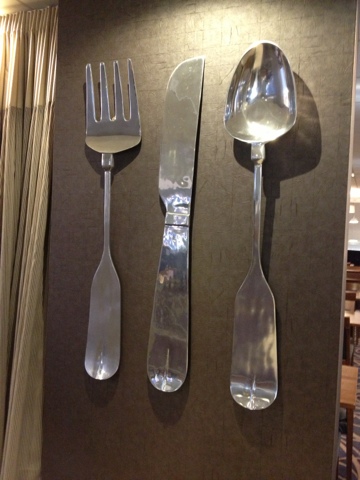Entrepreneurship runs in my blood. My Father is a lifelong entrepreneur and both of my Grandfathers were too. In my teens and early twenties I dreamed of owning my own restaurant and couldn't wait for when I would become the boss. Eventually my chance arrived and I handed in my notice to go and open my own eponymous restaurant.
I vividly remember that final service at Mosimann's Dining Club when I flippantly said to Anton as he passed me in the corridor; "Hey Chef, today is my last day as an employee!"
Later he quoted that back to me in a speech during my leaving party when he said it was a very bold and brave statement and wished me all the best. His words have stayed with me to this day since I hadn't really thought about how profound my statement was. It seemed I had set myself a challenge that I could NEVER go back to being an employee again. Now that became a scary idea at the time. But also a very exciting one...
Of course what I learned over the years is that you actually never stop being an employee. Even as he made that speech, Anton Mosimann himself was an employee since any Director of a Limited Company technically becomes an employee of 'The Company'. I also found that as much as I liked to think of myself as 'the boss', I still had to answer to business partners, and bank managers, and auditors and stakeholders and ultimately, our customers. Yes I could make my own decisions, but effectively I never stopped working for someone else. Did I ever stop being an employee? No, not really. I just thought I had for a short while.
That realisation made the decision to join a large company as an employee an easier one from that philosophical point of view, since I had now exorcised the demons of curiosity and found out for myself what it was like to be my own boss. It came with amazing highs, but also had incredible lows and the challenge since then has been to find that happy medium. As it happens, I think I may have found it.
When I joined my current employer, my biggest concern was in making sure I did not make any rash or bold decisions - decisions I would normally have made as an entrepreneur - until I knew the outcomes were going to be 'safe'. Learning all of the policies and procedures on my induction was a daunting experience. Furthermore, I was encouraged to 'manage the feelings' of one or two colleagues that I was to work with. This didn't bode well. As much as I tried to avoid 'rocking the boat', I began to lose confidence in my own decision-making instinct and constantly deferred to my line manager. I had gone from one extreme (of risk-taking) to the other (of safety) and got myself stuck in management quicksand. Something had to change if I was to become effective again.
Eventually, a senior manager asked me a very simple question that gave me my Eureka moment; "Thomas, if you ran this location contract as if you owned it, what would you do?". I balked at the question and gave two or three quickfire solutions to some of the issues we were facing. "So why don't you do that?" was the reply. This really helped me figure out how to think about any future issues or challenges I was to face. I needed to get back in touch with my entrepreneurship as it was my secret weapon to becoming a better manager and leader.
 |
| Idea on the Horizon |
Since then, I have tried to inject that momentum of energy and thought process into everything I do at work. By encouraging my team and colleagues to take more ownership of the challenges we face - just as I would as a business owner - they have become better managers themselves. I find myself constantly looking at how company systems can be tweaked and modified, initiatives kick-started (or improved), or how colleagues can be supported either directly from myself or from within the company culture. I know this approach might grate a few people the wrong way, but I have to believe that's their problem.
Like friendship, I believe that entrepreneurship grows and strengthens the more you offer and share it. It is the foundation upon which the company I work for was founded. It is also the foundation upon which my own character was moulded. Doesn't it make sense that each should benefit the other for the greater common good?
Please feel free to leave a comment. And if you enjoyed reading this you may like other related posts listed below. To receive future posts don't forget to subscribe via email (just enter your email above), by RSS or why not follow me on twitter @mykitchensync.















